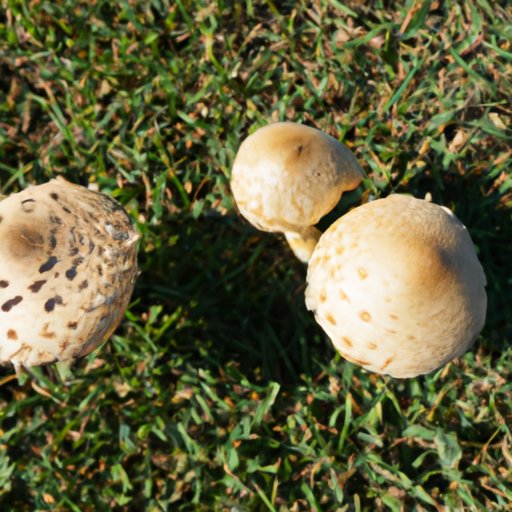
Introduction
Mushrooms are a type of fungi that can grow in your yard, especially in wet and humid conditions. Although mushrooms are not necessarily a harmful plant, they can be unsightly and even dangerous if they are of a poisonous kind. In addition, mushrooms can indicate a larger problem with the soil or environment. In this article, we will explore the various ways to get rid of mushrooms in your yard and prevent them from reappearing.
Manual Removal
The easiest and most cost-effective way to get rid of mushrooms is to manually remove them. Using a sturdy pair of gloves, pluck the mushrooms out of the ground near the base, and dispose of them in a plastic bag. Be sure not to leave any remnants of the mushroom, including the roots or spores, which can lead to future growth. Always avoid eating any mushrooms found in your yard since identifying different types of mushrooms can be difficult and consuming them can be dangerous.
Soil Modification
Adjusting the pH level of your soil can help deter the growth of mushrooms. Most mushrooms thrive in acidic soil, so you can increase the pH levels by adding lime. You can use a pH test kit to determine the current pH level; it’s essential to follow the package’s instructions to add the lime effectively. Additionally, mushrooms grow well in composted organic matter and decomposing roots, so to reduce the soil’s organic matter, stop adding them to your soil at least temporarily.
Fungicides
Fungicides are chemical solutions specifically designed to kill fungi-like mushrooms. These products are relatively simple to use, but it’s essential to choose the correct one. Some fungi are resistant to certain products, so ensure you select the appropriate one for your type of mushroom. Always read the instructions carefully before applying the fungicide, and keep in mind that overuse can be harmful and even toxic to plants of all kinds.
Increasing Sunlight
Mushrooms thrive in dark and damp conditions, so increasing the sunlight in the affected areas can limit their growth. Pruning trees and bushes that block the sun’s rays is an easy solution. Additionally, removing any other yard debris that blocks the sunlight can be helpful. The increased sunlight helps the soil dry out, which makes it harder for the mushrooms to grow.
Aeration
Aerating the soil can be a helpful way to reduce soil compaction and allow the soil to breathe. By introducing small holes into the soil, you can let water and air get to the roots, which helps the grass and other plants grow healthily. It’s critical to aerate the soil in the fall or spring so that the soil has enough time to heal before heavy rain or frost.
Reduce Watering
Reducing watering can address two problems: too much dampness and reduced nutrient transport. Mushrooms grow in damp environments with excess moisture, so reducing watering can help avoid encouraging more growth. Also, reducing watering ensures that plants’ roots have enough water to access the nutrients in the soil and reduce nutrient-blocking problems that can help mushrooms grow.
Natural Remedies
If you prefer to use natural remedies, there are a few options to try. Baking soda and vinegar can help reduce the soil’s acidic levels that promote mushroom growth. Additionally, adding cornmeal to your soil can increase the bacteria’s count that consumes the organic matter that mushrooms feed on, making it less hospitable for mushrooms to grow.
Conclusion
Getting rid of mushrooms in your yard might require some work, but with the right strategy, it can be easily accomplished. Depending on the cause of the problem, you might need to try various solutions. Some solutions can provide instant results, while others require time. Be sure to practice safety when applying any solution, especially if it involves chemicals. By using the techniques shared in this article, you can avoid unsightly mushrooms and have a healthier lawn and plants.




